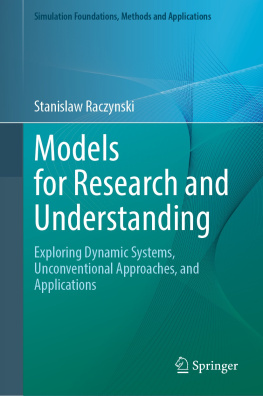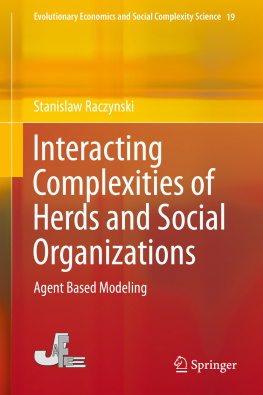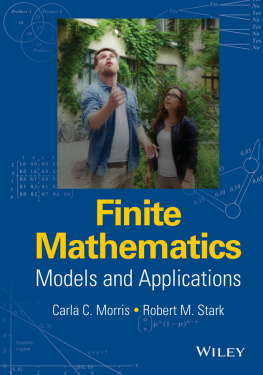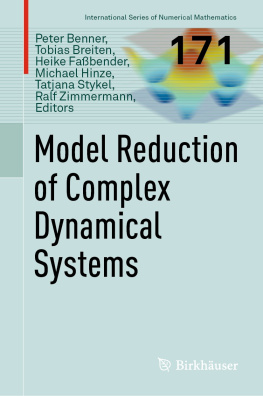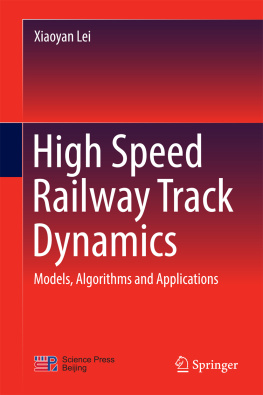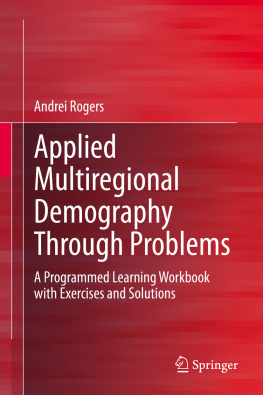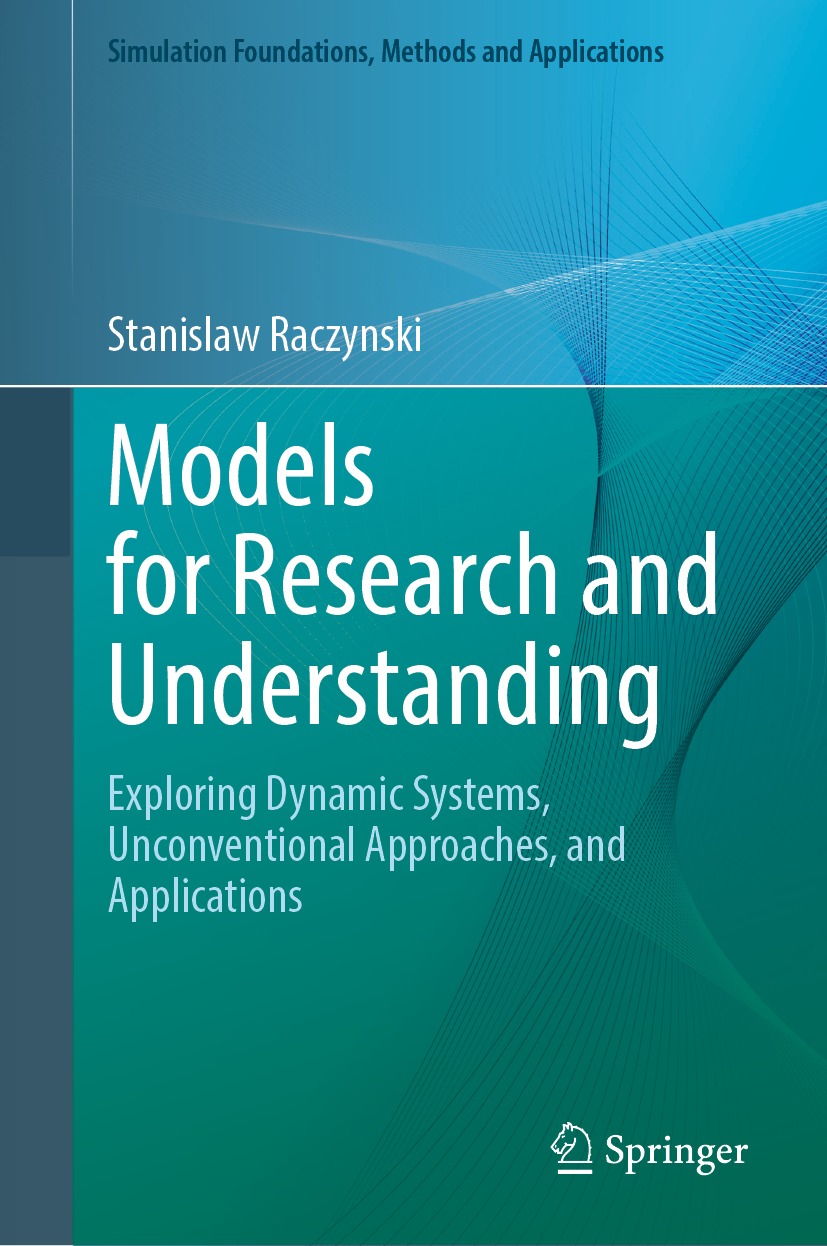Simulation Foundations, Methods and Applications
Series Editor
Andreas Tolk
The MITRE Corporation, McLean, VA, USA
Advisory Editors
Roy E. Crosbie
California State University, Chico, CA, USA
Tony Jakeman
Australian National University, Canberra, ACT, Australia
Axel Lehmann
Universitt der Bundeswehr Mnchen, Neubiberg, Germany
Stewart Robinson
Business School, Newcastle University, Newcastle upon Tyne, UK
Claudia Szabo
School of Computer Science, University of Adelaide, Adelaide, Australia
Mamadou Kaba Traor
IMS UMR 5218, University of Bordeaux, Talence, France
Bernard P. Zeigler
University of Arizona, Tucson, AZ, USA
Lin Zhang
Beihang Unviversity, Beijing, China
Andreas Tolk
Old Dominion University, Norfolk, VA, USA
Rodrigo Castro
Facultad de Ciencias Exactas y Naturales, Departamento de Computacin, Universidad de Buenos Aires, Ciudad Autnoma de Buenos Aires, Argentina
Sanja Lazarova-Molnar
Institute of Applied Informatics and Formal Description Methods, Karlsruhe Institute of Technology, Karlsruhe, Germany
The modelling and simulation community extends over a range of diverse disciplines and this landscape continues to expand at an impressive rate. Modelling and simulation is fundamentally a computational tool which has an established record of significantly enhancing the understanding of dynamic system behaviour on one hand, and the system design process on the other. Its relevance is unconstrained by discipline boundaries. Furthermore, the ever-increasing availability of computational power makes feasible applications that were previously beyond consideration.
Simulation Foundations, Methods and Applications hosts high-quality contributions that address the various facets of the modelling and simulation enterprise. These range from fundamental concepts that are strengthening the foundation of the discipline to the exploration of advances and emerging developments in the expanding landscape of application areas. The underlying intent is to facilitate and promote the sharing of creative ideas across discipline boundaries. The readership will include senior undergraduate and graduate students, modelling and simulation professionals and research workers.
Inasmuch as a model development phase is a prerequisite for any simulation study, there is an expectation that modelling issues will be appropriately addressed in each presentation. Incorporation of case studies and simulation results will be strongly encouraged.
Titles can span a variety of product types, including but not exclusively, textbooks, expository monographs, contributed volumes, research monographs, professional texts, guidebooks and other references.
These books will appeal, varyingly, to senior undergraduate and graduate students, and researchers in any of a host of disciplines where modelling and simuation has become (or is becoming) a basic problem-solving tool. Some titles will also directly appeal to modelling and simulation professionals and practitioners.
Stanislaw Raczynski
Models for Research and Understanding
Exploring Dynamic Systems, Unconventional Approaches, and Applications

Logo of the publisher
Stanislaw Raczynski
Facultad de Ingenieria, Universidad Panamericana, Mexico City, Mexico
ISSN 2195-2817 e-ISSN 2195-2825
Simulation Foundations, Methods and Applications
ISBN 978-3-031-11925-5 e-ISBN 978-3-031-11926-2
https://doi.org/10.1007/978-3-031-11926-2
The Editor(s) (if applicable) and The Author(s), under exclusive license to Springer Nature Switzerland AG 2022
This work is subject to copyright. All rights are solely and exclusively licensed by the Publisher, whether the whole or part of the material is concerned, specifically the rights of translation, reprinting, reuse of illustrations, recitation, broadcasting, reproduction on microfilms or in any other physical way, and transmission or information storage and retrieval, electronic adaptation, computer software, or by similar or dissimilar methodology now known or hereafter developed.
The use of general descriptive names, registered names, trademarks, service marks, etc. in this publication does not imply, even in the absence of a specific statement, that such names are exempt from the relevant protective laws and regulations and therefore free for general use.
The publisher, the authors, and the editors are safe to assume that the advice and information in this book are believed to be true and accurate at the date of publication. Neither the publisher nor the authors or the editors give a warranty, expressed or implied, with respect to the material contained herein or for any errors or omissions that may have been made. The publisher remains neutral with regard to jurisdictional claims in published maps and institutional affiliations.
This Springer imprint is published by the registered company Springer Nature Switzerland AG
The registered company address is: Gewerbestrasse 11, 6330 Cham, Switzerland
Preface
In this book, you will find topics in modeling and simulation, both conventional, as well as suggestions about new tools and somewhat wider insight on modeling. Most of the chapters of the book may be used in didactic work, as a textbook or supplementary material. In the text, the student will find explanations of diverse kind of modeling tasks, and examples of models of various types. Ten out of 12 chapters contain also sections of questions and answers that focus on the most essential aspects of the presented modeling methodology.
Models are used by thinking beings, consciously or sub-consciously, to manage their behavior and respond to the events in the environment. The most perfect and huge collection of models is contained in our brains. During years of learning, the humans, as well as most of the animals, created models of their own bodies and objects from the environment, to be able to take decisions and control their behavior. The human brain is increasingly complicated and capable of creating and storing models not only inside it, but also in other media. We create models in the form of written descriptions, drawings, mathematical expressions, or logical structures, and store them for further use.
The appearance of computers provided a new, powerful tool for model storage and processing. In this book, we discuss models that can be used in computer simulation. This kind of modeling is closely connected with simulation on analog and digital machines. The results of creating and using models help us to take decisions, predict, and/or understand the world where we live. Most of the things we observe are still too complex to be understood. The knowledge accumulated in models helps us in taking correct actions, grow, understand, and survive.
In general, models help us to understand how complex systems work. Models of complex systems need not be complex or huge. I remember that in the early 1960s, when we worked on 100kHz CPU, 32kB memory machines, a friend of mine asked me to solve an ordinary differential equation on a computer. The equation was written in one line, with rather simple, but non-trivial formula. The solution was not easy, but finally the program worked. I asked him:

